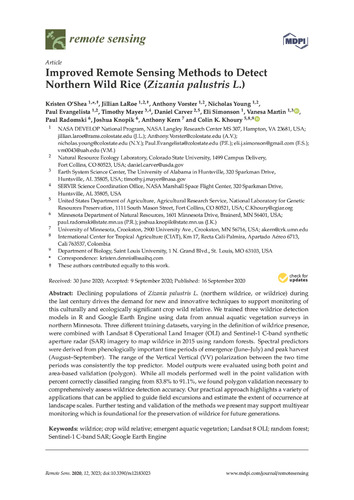Improved remote sensing methods to detect northern wild rice (Zizania palustris L.)
Declining populations of Zizania palustris L. (northern wildrice, or wildrice) during
the last century drives the demand for new and innovative techniques to support monitoring of
this culturally and ecologically significant crop wild relative. We trained three wildrice detection
models in R and Google Earth Engine using data from annual aquatic vegetation surveys in
northern Minnesota. Three di erent training datasets, varying in the definition of wildrice presence,
were combined with Landsat 8 Operational Land Imager (OLI) and Sentinel-1 C-band synthetic
aperture radar (SAR) imagery to map wildrice in 2015 using random forests. Spectral predictors
were derived from phenologically important time periods of emergence (June–July) and peak harvest
(August–September). The range of the Vertical Vertical (VV) polarization between the two time
periods was consistently the top predictor. Model outputs were evaluated using both point and
area-based validation (polygon). While all models performed well in the point validation with
percent correctly classified ranging from 83.8% to 91.1%, we found polygon validation necessary to
comprehensively assess wildrice detection accuracy. Our practical approach highlights a variety of
applications that can be applied to guide field excursions and estimate the extent of occurrence at
landscape scales. Further testing and validation of the methods we present may support multiyear
monitoring which is foundational for the preservation of wildrice for future generations.

